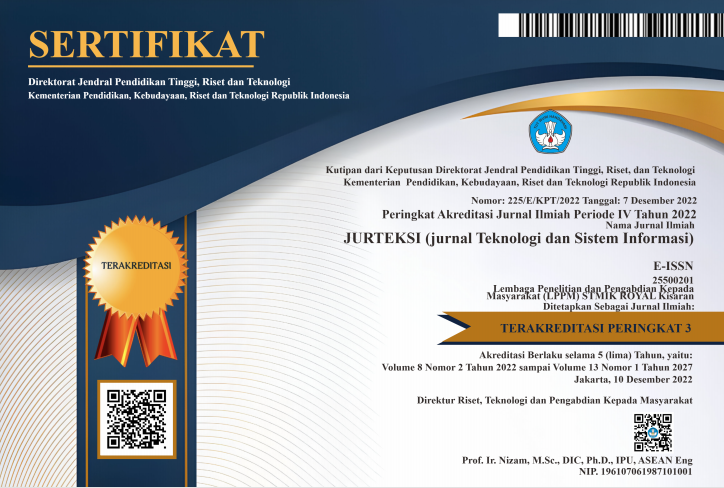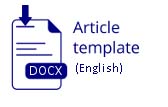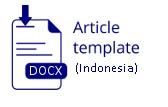PREDICTING FUTURE ENROLLMENT TRENDS AT UNIVERSITAS LANCANG KUNING USING ARIMA AND LSTM MODELS
Abstract
Abstract: This research is driven by the challenges faced by Universitas Lancang Kuning (UNILAK) in attracting applicants amidst intense competition, especially after the government's policy opened independent pathways to State Universities (PTN) from 2022-2023, which impacted private university applicant numbers. To address this and support strategic planning, this study aims to predict the trend of prospective students applying to all study programs at UNILAK for the period 2025-2027. Two time series models were employed: ARIMA (AutoRegressive Integrated Moving Average) and LSTM (Long Short-Term Memory). Applicant data from 2019 to 2024 was used to build the model. The Augmented Dickey-Fuller (ADF) test confirmed the data's stationarity with a p-value of 0.0. ACF and PACF analyses determined the ARIMA parameters as p=1, d=1, q=1. The LSTM model was trained to capture more complex data patterns. ARIMA predictions for 2025, 2026, and 2027 are 3298.66, 3362.33, and 3371.30, respectively. LSTM predictions for the same years are 3335.64, 3476.52, and 3518.42. Evaluation using Root Mean Squared Error (RMSE) showed ARIMA (RMSE=588.72) to be more accurate than LSTM (RMSE=653.96). Nevertheless, LSTM provided a more optimistic prediction. This study concludes that ARIMA is better suited for short-term planning, while LSTM can be used for more ambitious long-term strategies.
Keywords: arima; LSTM; applicants; prediction; university
Abstrak: Penelitian ini didorong oleh tantangan Universitas Lancang Kuning (UNILAK) dalam menarik pendaftar di tengah persaingan ketat, khususnya setelah kebijakan pemerintah membuka jalur mandiri ke Perguruan Tinggi Negeri (PTN) sejak 2022-2023, yang menyebabkan penurunan jumlah pendaftar di universitas swasta. Untuk mendukung perencanaan strategis, studi ini bertujuan memprediksi tren jumlah calon mahasiswa yang mendaftar ke seluruh program studi di UNILAK untuk periode 2025-2027.Dua model deret waktu digunakan: ARIMA (AutoRegressive Integrated Moving Average) dan LSTM (Long Short-Term Memory). Data jumlah pendaftar dari 2019 hingga 2024 digunakan untuk membangun model. Uji Augmented Dickey-Fuller (ADF) menunjukkan data stasioner dengan p-value 0,0. Analisis ACF dan PACF menentukan parameter ARIMA sebagai p=1, d=1, q=1. Model LSTM dilatih untuk menangkap pola data yang lebih kompleks.Prediksi ARIMA untuk 2025, 2026, dan 2027 adalah 3298.66, 3362.33, dan 3371.30. Prediksi LSTM untuk tahun yang sama adalah 3335.64, 3476.52, dan 3518.42. Evaluasi menggunakan Root Mean Squared Error (RMSE) menunjukkan ARIMA (RMSE=588.72) lebih akurat daripada LSTM (RMSE=653.96). Meskipun demikian, LSTM memberikan prediksi yang lebih optimis. Studi ini menyimpulkan ARIMA lebih cocok untuk perencanaan jangka pendek, sementara LSTM dapat digunakan untuk strategi jangka panjang yang ambisius.
Kata kunci: arima; LSTM; pendaftar; prediksi; universitas
References
M. Sitompul, M. A. Hasan, and M. Devega, “Forecasting Simcard Demand Using Linear Regression Method,†J. Res. Dev., vol. 8, no. 1, 2023, doi: 10.25299/itjrd.2022.12202.
H. Sunaryanto, M. A. Hasan, and G. Guntoro, “Classification Analysis of Unilak Informatics Engineering Students Using Support Vector Machine (SVM), Iterative Dichotomiser 3 (ID3), Random Forest and K-Nearest Neighbors (KNN),†IT J. Res. Dev., vol. 7, no. 1, pp. 36–42, Aug. 2022, doi: 10.25299/itjrd.2022.8912.
S. Khan, Y. Muhammad, I. Jadoon, S. E. Awan, and M. A. Z. Raja, “Leveraging LSTM-SMI and ARIMA architecture for robust wind power plant forecasting,†Appl. Soft Comput., vol. 170, p. 112765, 2025.
J. Fattah, L. Ezzine, Z. Aman, H. El Moussami, and A. Lachhab, “Forecasting of demand using ARIMA model,†Int. J. Eng. Bus. Manag., vol. 10, p. 1847979018808673, 2018.
A. A. Ariyo, A. O. Adewumi, and C. K. Ayo, “Stock price prediction using the ARIMA model,†in 2014 UKSim-AMSS 16th international conference on computer modelling and simulation, 2014, pp. 106–112.
E. Chodakowska, J. Nazarko, Å. Nazarko, H. S. Rabayah, R. M. Abendeh, and R. Alawneh, “Arima models in solar radiation forecasting in different geographic locations,†Energies, vol. 16, no. 13, p. 5029, 2023.
R. Ospina, J. A. M. Gondim, V. Leiva, and C. Castro, “An overview of forecast analysis with ARIMA models during the COVID-19 pandemic: Methodology and case study in Brazil,†Mathematics, vol. 11, no. 14, p. 3069, 2023.
L. Kong et al., “Time-aware missing healthcare data prediction based on ARIMA model,†IEEE/ACM Trans. Comput. Biol. Bioinforma., 2022.
X. Dong, B. Dang, H. Zang, S. Li, and D. Ma, “The prediction trend of enterprise financial risk based on machine learning arima model,†J. Theory Pract. Eng. Sci., vol. 4, no. 01, pp. 65–71, 2024.
S. Yasmin and M. Moniruzzaman, “Forecasting of area, production, and yield of jute in Bangladesh using Box-Jenkins ARIMA model,†J. Agric. Food Res., vol. 16, p. 101203, 2024.
R. Tosepu and N. Y. Ningsi, “Forecasting of diarrhea disease using ARIMA model in Kendari City, Southeast Sulawesi Province, Indonesia,†Heliyon, vol. 10, no. 22, 2024.
L. Wang, L. Chen, S. Jin, and C. Li, “Forecasting the Green Behaviour Level of Chinese Enterprises: A Conjoined Application of the Autoregressive Integrated Moving Average (ARIMA) Model and Multi-Scenario Simulation,†Technol. Soc., p. 102825, 2025.
U. Samal and A. Kumar, “Enhancing software reliability forecasting through a hybrid ARIMA-ANN model,†Arab. J. Sci. Eng., vol. 49, no. 5, pp. 7571–7584, 2024.
X. Zhang et al., “High-speed railway seismic response prediction using CNN-LSTM hybrid neural network,†J. Civ. Struct. Heal. Monit., vol. 14, no. 5, pp. 1125–1139, 2024.
Y. Tang, P. Dong, Z. Tang, X. Chu, and J. Liang, “Vmrnn: Integrating vision mamba and lstm for efficient and accurate spatiotemporal forecasting,†in Proceedings of the IEEE/CVF Conference on Computer Vision and Pattern Recognition, 2024, pp. 5663–5673.
S. Lu et al., “Surgical instrument posture estimation and tracking based on LSTM,†ICT Express, vol. 10, no. 3, pp. 465–471, 2024.
D. O. Oyewola, S. A. Akinwunmi, and T. O. Omotehinwa, “Deep LSTM and LSTM-Attention Q-learning based reinforcement learning in oil and gas sector prediction,†Knowledge-Based Syst., vol. 284, p. 111290, 2024.
F. Dao, Y. Zeng, and J. Qian, “Fault diagnosis of hydro-turbine via the incorporation of bayesian algorithm optimized CNN-LSTM neural network,†Energy, vol. 290, p. 130326, 2024.
J. Shi, J. Zhong, Y. Zhang, B. Xiao, L. Xiao, and Y. Zheng, “A dual attention LSTM lightweight model based on exponential smoothing for remaining useful life prediction,†Reliab. Eng. & Syst. Saf., vol. 243, p. 109821, 2024.
H. Yadav and A. Thakkar, “NOA-LSTM: An efficient LSTM cell architecture for time series forecasting,†Expert Syst. Appl., vol. 238, p. 122333, 2024.
S. Arifin, M. M. Manurung, S. Jonathan, M. Effendi, and P. W. Prasetyo, “Trend Analysis of the ARIMA Method: A Survey of Scholarly Works,†Recent Eng. Sci. Technol., vol. 2, no. 03, pp. 1–14, 2024.













